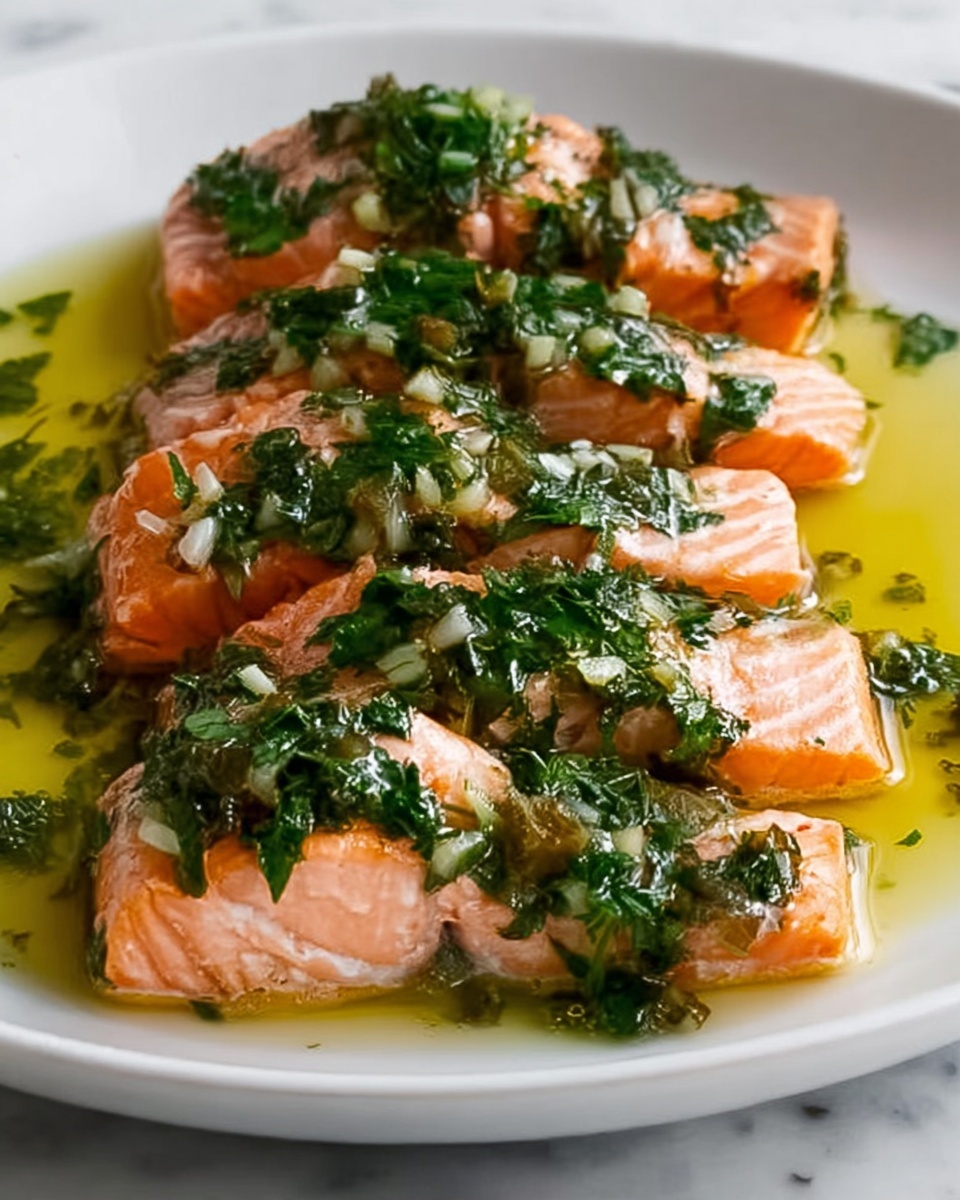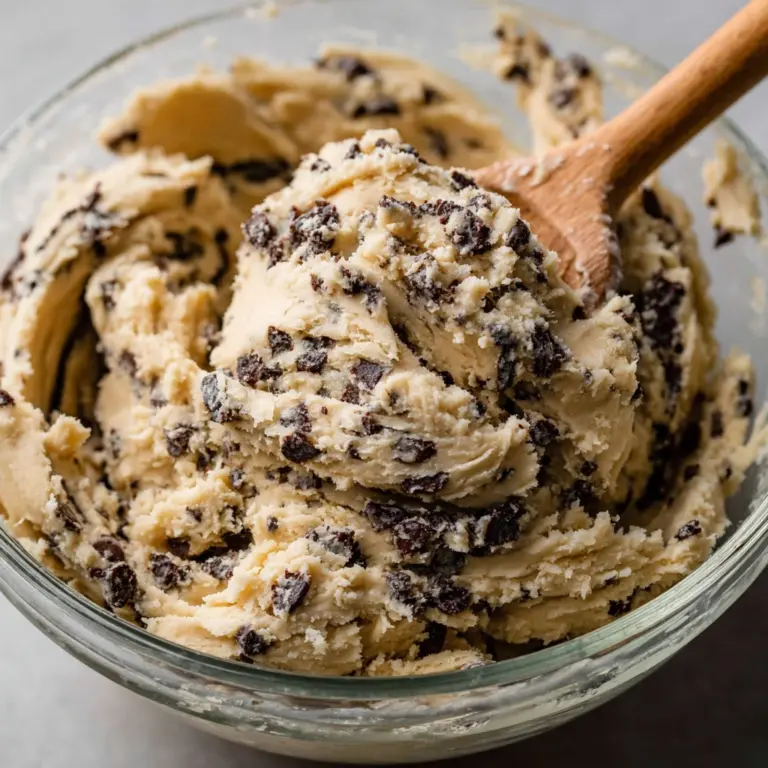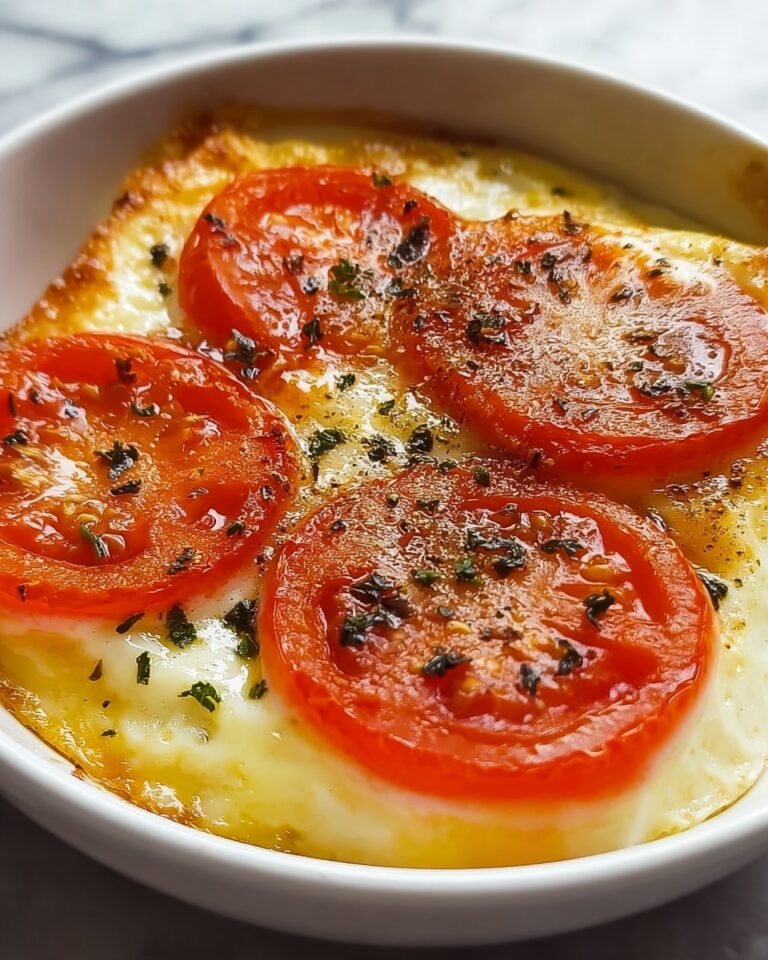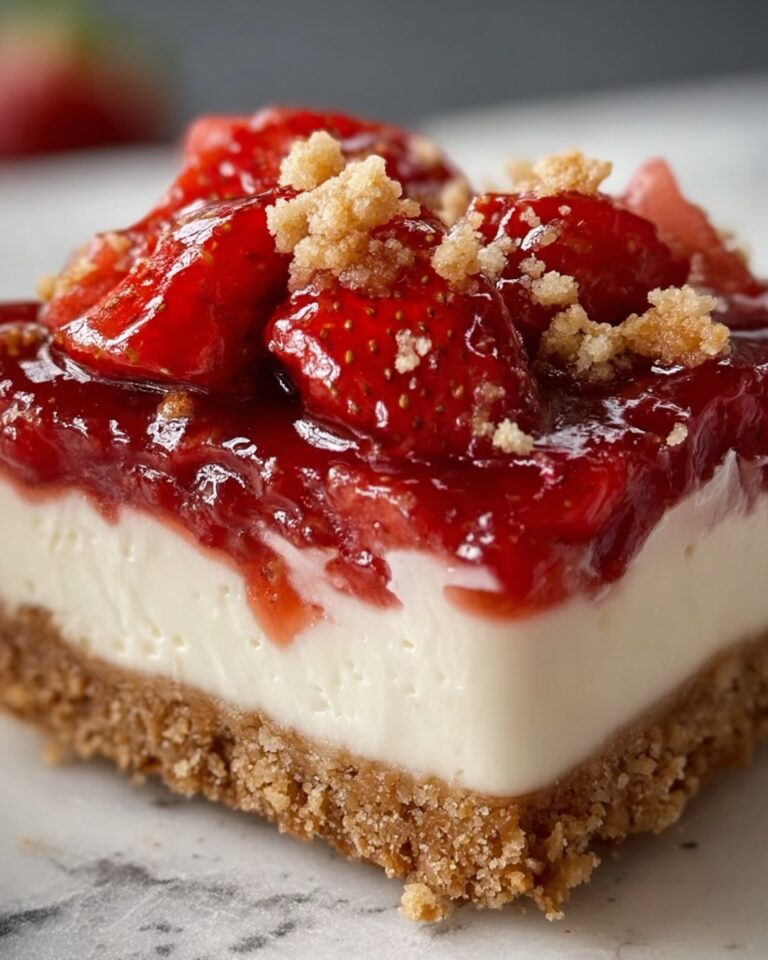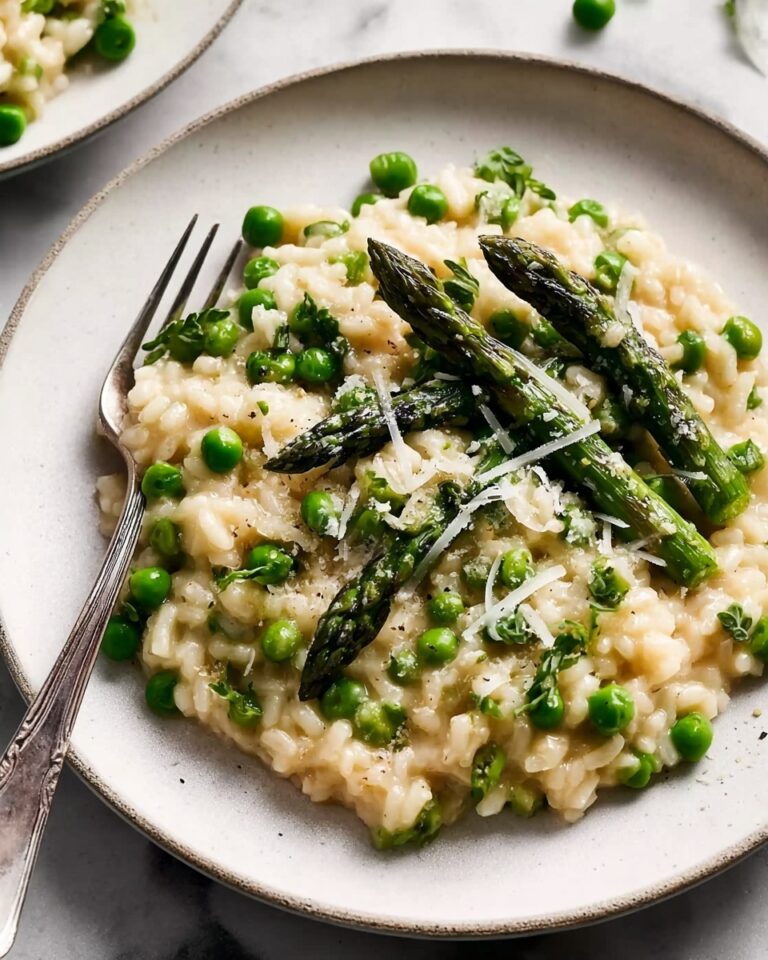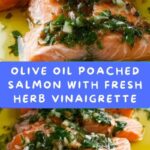If you’re looking for a dish that feels luxurious yet is surprisingly simple to prepare, the Olive Oil Poached Salmon with Herb Vinaigrette Recipe is your new best friend in the kitchen. This recipe showcases silky, tender salmon gently cooked in fragrant olive oil, infused with subtle hints of lemon, garlic, and fresh thyme. The crowning glory is a vibrant herb vinaigrette that brings brightness and a burst of herbaceous flavors to every bite. It’s a wholesome, elegant meal that feels like a special occasion but comes together with ease — perfect for impressing dinner guests or treating yourself on a cozy night in.
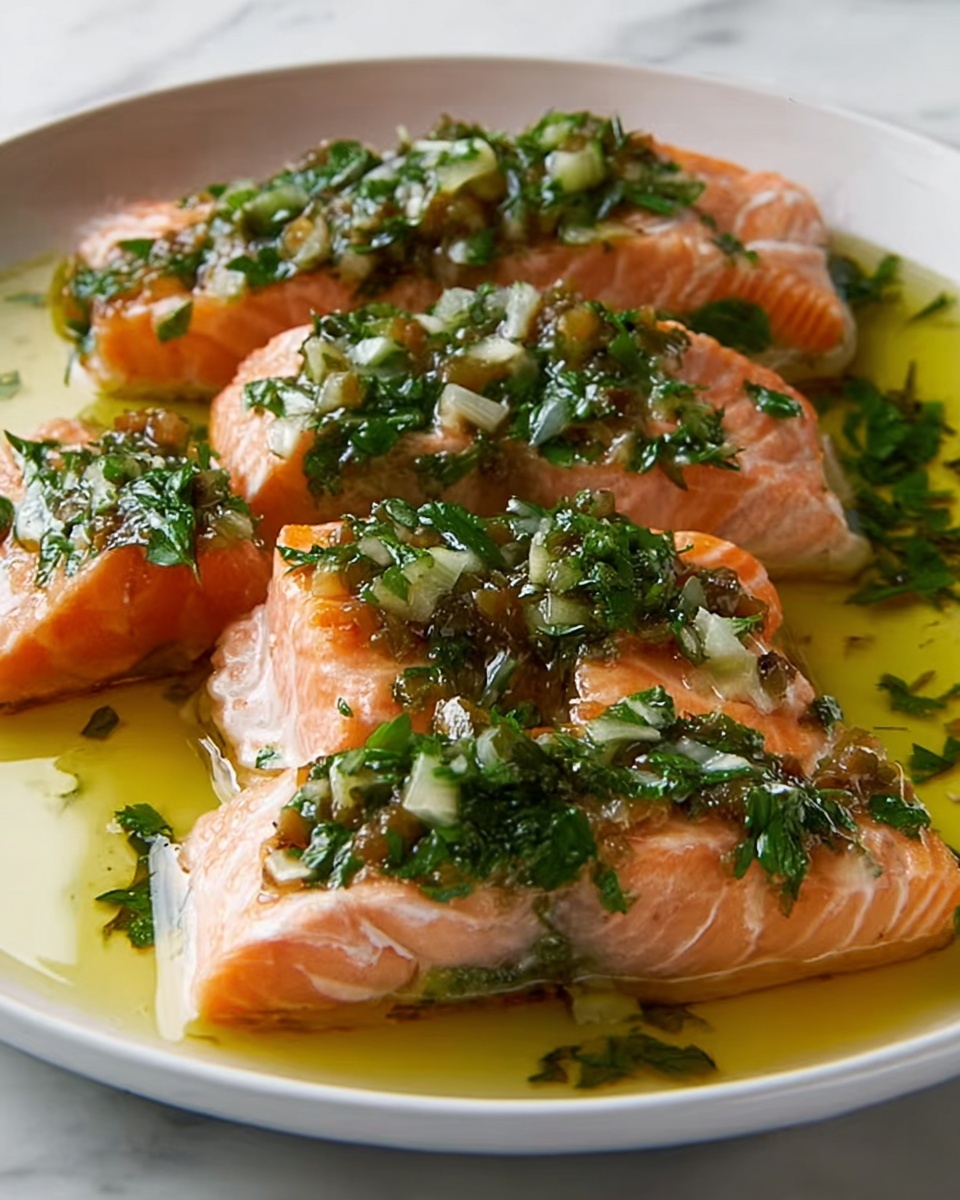
Ingredients You’ll Need
For this Olive Oil Poached Salmon with Herb Vinaigrette Recipe, you don’t need a laundry list of exotic ingredients. Every component is straightforward but essential, playing a key role in layering flavors and achieving that perfect balance of richness and freshness.
- 4 skinless salmon fillets (6 oz each): Look for fresh, firm fillets for the best texture and flavor.
- 2 cups extra-virgin olive oil: The base for poaching, this imparts a silky mouthfeel and gentle flavor.
- 1 lemon (sliced): Adds bright citrus notes that elevate the entire dish.
- 4 garlic cloves (smashed): Gives a subtle aromatic depth without overpowering the salmon.
- 4 sprigs fresh thyme: Provides an earthy, herbal aroma that pairs beautifully with fish.
- 1 teaspoon salt: Enhances all the flavors and seasons the fish perfectly.
- ½ teaspoon black pepper: Adds a mild warmth to complement the olive oil.
- ¼ cup fresh parsley (finely chopped): One of the fresh herbs that makes the vinaigrette lively and green.
- 2 tablespoons fresh dill (chopped): Adds a lovely anise-like flavor to the dressing.
- 1 tablespoon fresh chives (chopped): Offers a gentle oniony crispness to the vinaigrette.
- 1 tablespoon capers (rinsed and chopped): Bring a briny pop for contrast and complexity.
- 2 tablespoons red wine vinegar: Balances the richness with a tangy zip.
- ⅓ cup extra-virgin olive oil (for vinaigrette): Emulsifies the vinaigrette and adds fruity depth.
- 1 teaspoon Dijon mustard: Helps the vinaigrette emulsify and adds subtle sharpness.
- Salt and pepper to taste: To make sure the vinaigrette sings just right.
How to Make Olive Oil Poached Salmon with Herb Vinaigrette Recipe
Step 1: Prepare the Poaching Liquid
Start by preheating your oven to 275°F. In a small oven-safe pan or baking dish sturdy enough to hold the salmon in one layer, combine 2 cups of extra-virgin olive oil, lemon slices, smashed garlic cloves, fresh thyme sprigs, salt, and black pepper. Warm this mixture gently over medium-low heat until the temperature reaches about 120°F — this slow warming extracts those aromatic flavors into the oil without frying anything.
Step 2: Poach the Salmon
Remove the pan from the heat and gently nestle your skinless salmon fillets into the warm olive oil, making sure they’re fully submerged. Pop the pan into the oven and let the salmon poach slowly for 20 to 25 minutes, or until the flesh turns opaque and tender, but not falling apart. This method ensures the salmon stays moist and silky, soaking up subtle nuances from the infused olive oil.
Step 3: Make the Herb Vinaigrette
While the salmon is poaching, whisk together your finely chopped parsley, dill, chives, and capers with red wine vinegar, Dijon mustard, and ⅓ cup extra-virgin olive oil in a small bowl. Season with salt and pepper to taste, then whisk vigorously until the vinaigrette emulsifies into a smooth, vibrant dressing that will perfectly contrast the richness of the salmon.
Step 4: Plate and Dress
Using a slotted spoon, carefully lift each salmon fillet from the poaching oil, letting excess oil drip back into the pan. Transfer the fillets to plates and generously spoon the fragrant herb vinaigrette over the salmon. Serve immediately while warm, or let come to room temperature for a more delicate, refreshing experience.
How to Serve Olive Oil Poached Salmon with Herb Vinaigrette Recipe
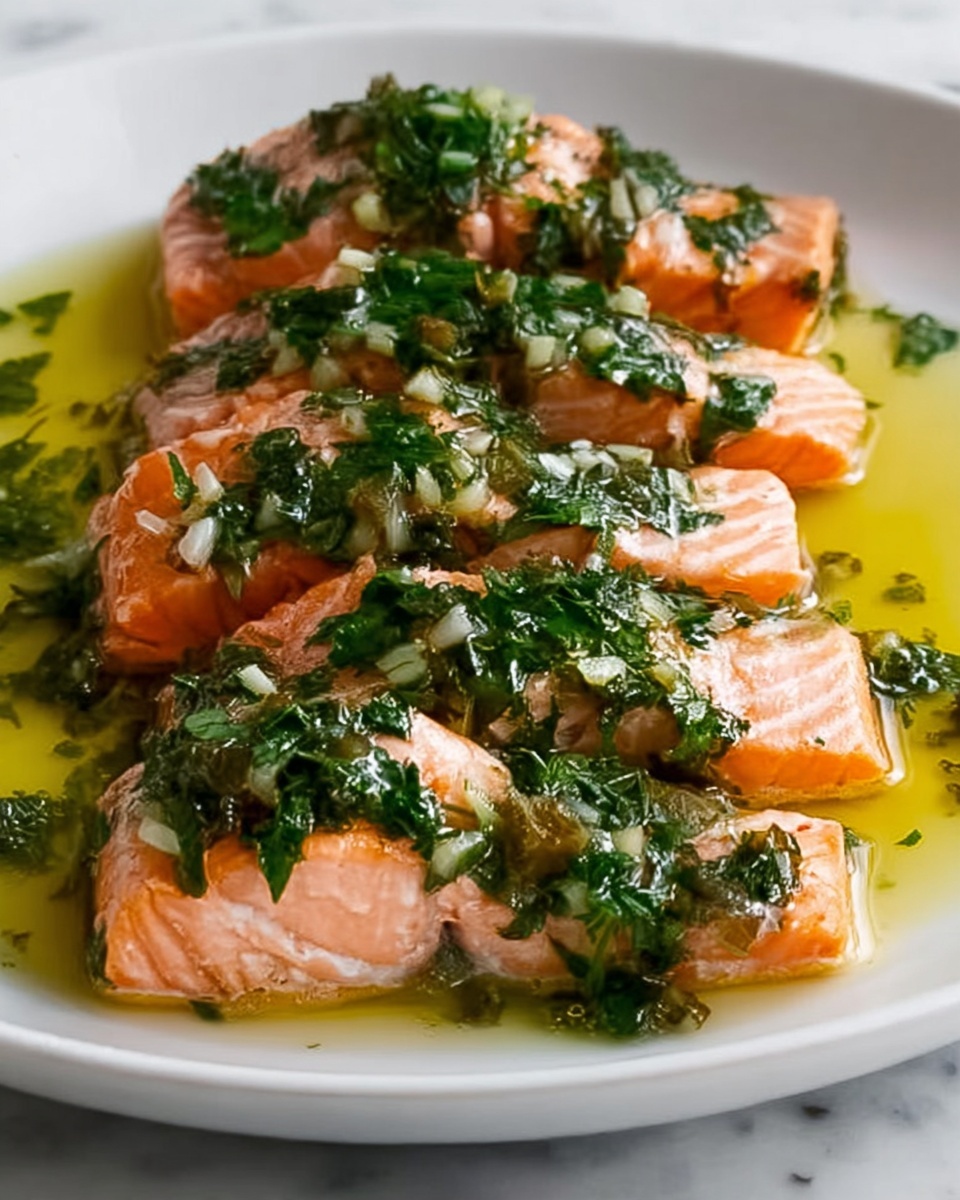
Garnishes
A sprinkle of freshly chopped herbs like parsley or dill over the plated salmon adds an extra burst of color and flavor. A few thin lemon zest curls or a light dusting of cracked black pepper also make for elegant and tasty finishing touches.
Side Dishes
This salmon shines alongside simple roasted vegetables — think tender asparagus or caramelized carrots. For a heartier plate, a green salad with a zesty lemon dressing or a bed of buttery lentils offers both texture and balance. Light, clean sides allow the beauty of the Olive Oil Poached Salmon with Herb Vinaigrette Recipe to truly shine.
Creative Ways to Present
Try serving the salmon over a warm grain salad or alongside sliced avocado for a fresh, contemporary twist. Or, stack the salmon fillet on a toasted baguette slice, topped with the vinaigrette as an elegant appetizer. The recipe’s versatility means you can get playful and customize your presentation to suit the mood.
Make Ahead and Storage
Storing Leftovers
If you have any leftover salmon, store it in an airtight container in the refrigerator for up to two days. Be sure to keep the vinaigrette separate from the fish until ready to eat to maintain the best texture and flavor.
Freezing
Since this recipe relies on delicate poaching, freezing is not ideal as it can affect the texture. However, if necessary, wrap the cooked salmon tightly in plastic wrap and foil, then freeze for up to one month. Thaw overnight in the fridge before reheating gently.
Reheating
To reheat, warm the salmon gently in a low-temperature oven (around 275°F) or on the stovetop in a covered pan with a splash of water to keep it moist. Avoid microwaving as it can dry out the tender fish. After warming, drizzle with fresh herb vinaigrette before serving.
FAQs
Can I use skin-on salmon fillets for this recipe?
Absolutely! Skin-on fillets can be used, but be sure to lay the salmon skin-side down in the poaching oil to keep it intact. The skin can add extra flavor and texture if you enjoy it.
Is it necessary to poach the salmon in olive oil?
Poaching in extra-virgin olive oil is key to the silky, buttery texture and nuanced flavor this recipe delivers. While you might substitute other oils, olive oil provides a unique richness and aroma that defines this dish.
Can I prepare the herb vinaigrette in advance?
Yes, the vinaigrette can be made a few hours ahead and refrigerated. Just give it a quick whisk before serving to bring it back together and refresh the flavors.
Is this recipe suitable for a gluten-free diet?
Definitely! All the ingredients in the Olive Oil Poached Salmon with Herb Vinaigrette Recipe are naturally gluten-free, making it a safe and delicious option for gluten-sensitive eaters.
What herbs can I substitute if I don’t have dill or chives?
If you’re short on dill or chives, feel free to use fresh tarragon, basil, or even a touch of mint. These herbs will keep the vinaigrette bright and fresh while adding their own unique twist.
Final Thoughts
I can’t recommend the Olive Oil Poached Salmon with Herb Vinaigrette Recipe enough — it’s one of those dishes that feels fancy but is unbelievably easy to make. The gentle poaching locks in moisture, while the fresh herb vinaigrette adds that pop of brightness that keeps you coming back for more. Whether it’s a weeknight dinner or a weekend celebration, give this recipe a try and watch it become a new favorite in your culinary repertoire!
Print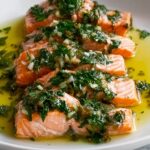
Olive Oil Poached Salmon with Herb Vinaigrette Recipe
- Prep Time: 15 minutes
- Cook Time: 25 minutes
- Total Time: 40 minutes
- Yield: 4 servings
- Category: Main Course
- Method: Poaching
- Cuisine: American
- Diet: Gluten Free
Description
Discover a delicate and flavorful way to enjoy salmon with this Olive Oil Poached Salmon recipe, enhanced by a fresh herb vinaigrette. Poached gently in extra-virgin olive oil with lemon, garlic, and thyme, the salmon remains tender and moist, while the vibrant vinaigrette of parsley, dill, chives, and capers adds a zesty, aromatic finish. Perfect for a healthy main course that’s both elegant and easy to prepare.
Ingredients
Salmon and Poaching Liquid
- 4 skinless salmon fillets (6 oz each)
- 2 cups extra-virgin olive oil
- 1 lemon, sliced
- 4 garlic cloves, smashed
- 4 sprigs fresh thyme
- 1 teaspoon salt
- ½ teaspoon black pepper
Herb Vinaigrette
- ¼ cup fresh parsley, finely chopped
- 2 tablespoons fresh dill, chopped
- 1 tablespoon fresh chives, chopped
- 1 tablespoon capers, rinsed and chopped
- 2 tablespoons red wine vinegar
- ⅓ cup extra-virgin olive oil
- 1 teaspoon Dijon mustard
- Salt and pepper, to taste
Instructions
- Prepare the poaching oil: Preheat your oven to 275°F. In an oven-safe pan or baking dish just large enough to hold all the salmon fillets in a single layer, combine 2 cups of extra-virgin olive oil, lemon slices, smashed garlic cloves, fresh thyme sprigs, salt, and black pepper. Heat on the stovetop over medium-low heat until the oil reaches about 120°F and is warm to the touch, then remove it from the heat.
- Poach the salmon: Gently place the salmon fillets into the warm oil, making sure they are fully submerged. Carefully transfer the pan to the preheated oven and poach the salmon for 20 to 25 minutes, or until the fish is just cooked through and turns opaque, ensuring it stays tender and moist.
- Make the herb vinaigrette: While the salmon is poaching, whisk together the finely chopped parsley, dill, chives, chopped capers, red wine vinegar, Dijon mustard, and ⅓ cup extra-virgin olive oil in a small bowl until the mixture is emulsified. Season the vinaigrette with salt and pepper to taste.
- Serve: Once the salmon is cooked, use a slotted spoon to carefully remove each fillet from the oil. Let them drain briefly, then plate the salmon. Spoon the fresh herb vinaigrette generously over each fillet. Serve warm or at room temperature for a delightful meal.
Notes
- Feel free to substitute other fresh herbs like tarragon or basil in the vinaigrette for a different flavor profile.
- This dish pairs beautifully with roasted vegetables, a simple green salad, or served over lentils for a complete, balanced meal.
- Ensure the olive oil temperature does not exceed 120°F during poaching to maintain the gentle cooking process.
- Leftover poaching oil can be strained and used for dressings or cooking to impart subtle flavors.

